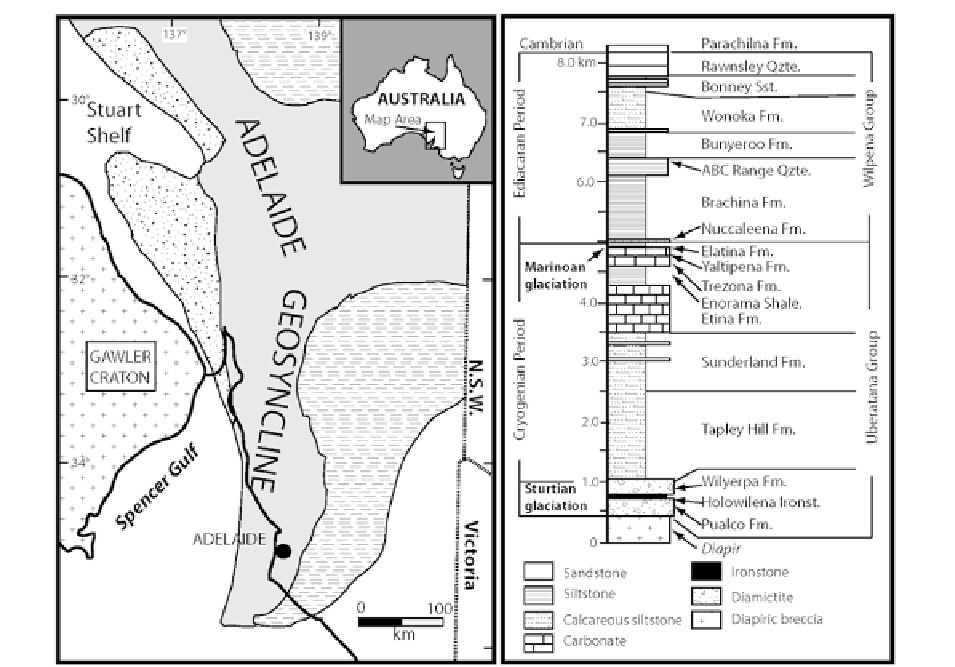Geology Reference
In-Depth Information
Fig. 15.1
Location map of the Adelaide Geosyncline (From Schmidt and Williams
1995
) and generalized stratigraphic column of
the Umberatana and Wilpena groups of the central Flinders ranges, South Australia (From Knoll et al.
2004
)
Formation commonly display laminae that are arranged
in thick-thin pairs (Williams
1989, 1991
). Such sys-
tematic alternation of relatively thick and thin laminae
is observed in modern tidal deposits and uniquely
records the diurnal inequality of the tides through its
influence on the strength of successive semidiurnal
tidal currents (e.g. de Boer et al.
1989
; Dalrymple
et al.
1991
; Kvale and Archer
1991
). Laminae in the
Reynella Siltstone are grouped in cycles from 0.5 to
>6 cm thick in which the laminae thicken and thin.
Alternating relatively thick and thin cycles occur in
many places. Mudstone drapes commonly bound the
cycles. However, mudstone drapes are thinner and
less conspicuous for some of the thicker cycles which
commonly contain 14-15 laminae. Thinner cycles
are up to 2 cm thick and contain 8-16 laminae.
Conspicuous thickening and thinning cycles in the
Elatina Formation are up to 2 cm thick, contain 8-16
laminae and are bounded by mudstone drapes
(Fig.
15.2
). The cycles are comparable to neap-
spring-neap cycles that occur in modern tidal deposits
(Dalrymple et al.
1991
; Tessier
1993
) and record the
fortnightly tidal cycle. The tidal interpretation of
the Reynella and Elatina rhythmites is reinforced
by the similarity of the rhythmite patterns to modern
tidal records (Williams
2000
).
15.3.2 Upper Mount Guide Quartzite,
Australia
The Upper Mount Guide Quartzite in the Mount Isa
region of Australia (Fig.
15.3
) overlies rift-related
bimodal volcanics, conglomerates and feldspathic
sandstones of Bottletree Formation and Upper Mount
Guide Quartzite (Fig.
15.4
). The Upper Mount Guide
Quartzite consists entirely of supermature quartz arenite
and is interpreted as a response to intracratonic thermal
contraction (Eriksson et al.
1994
). Felsic volcanic
rocks of the Bottletree Formation and cross cutting

